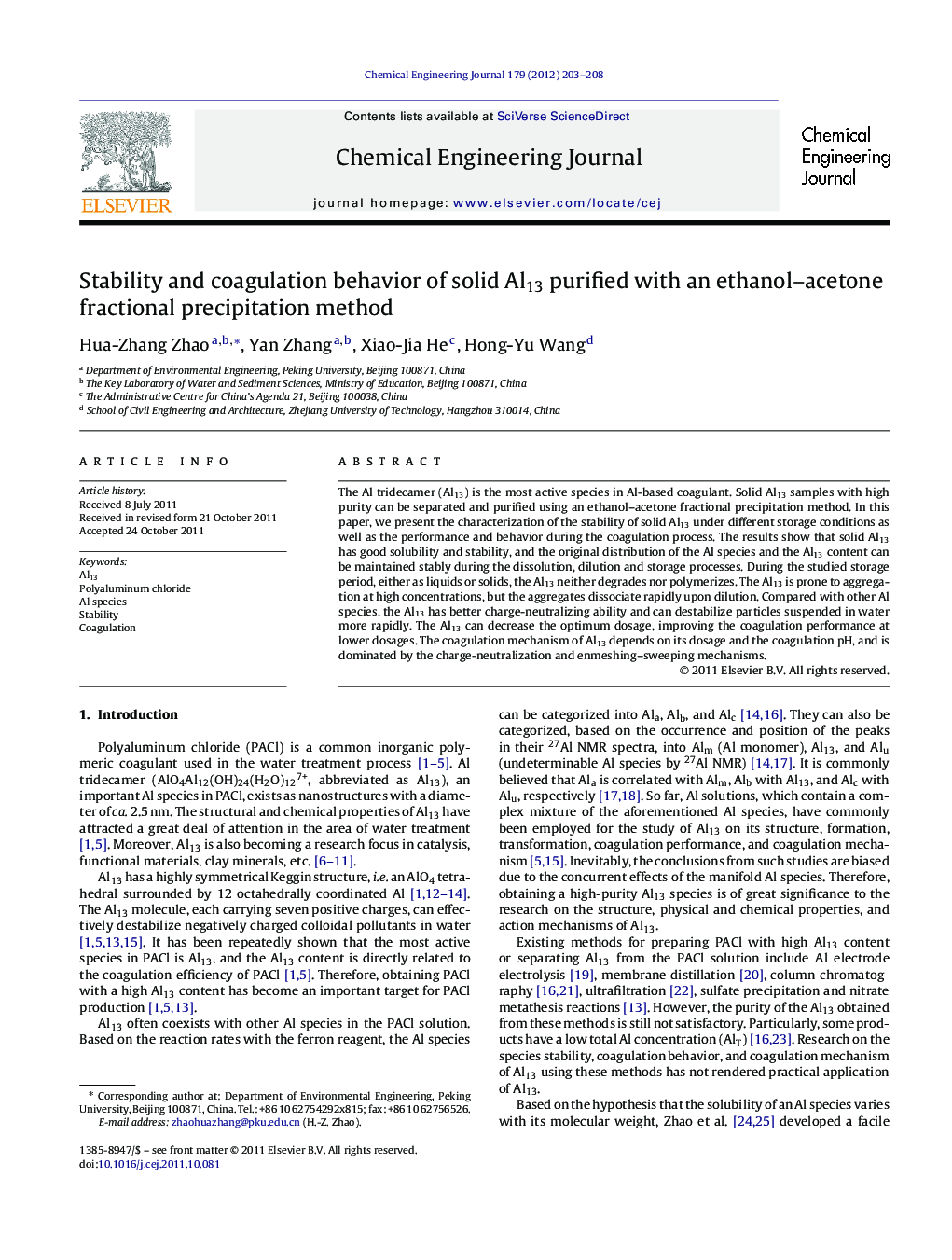| Article ID | Journal | Published Year | Pages | File Type |
|---|---|---|---|---|
| 150413 | Chemical Engineering Journal | 2012 | 6 Pages |
The Al tridecamer (Al13) is the most active species in Al-based coagulant. Solid Al13 samples with high purity can be separated and purified using an ethanol–acetone fractional precipitation method. In this paper, we present the characterization of the stability of solid Al13 under different storage conditions as well as the performance and behavior during the coagulation process. The results show that solid Al13 has good solubility and stability, and the original distribution of the Al species and the Al13 content can be maintained stably during the dissolution, dilution and storage processes. During the studied storage period, either as liquids or solids, the Al13 neither degrades nor polymerizes. The Al13 is prone to aggregation at high concentrations, but the aggregates dissociate rapidly upon dilution. Compared with other Al species, the Al13 has better charge-neutralizing ability and can destabilize particles suspended in water more rapidly. The Al13 can decrease the optimum dosage, improving the coagulation performance at lower dosages. The coagulation mechanism of Al13 depends on its dosage and the coagulation pH, and is dominated by the charge-neutralization and enmeshing–sweeping mechanisms.
► Solid Al13 is purified with an ethanol–acetone fractional precipitation method. ► Solid Al13 has good solubility, stability, and storability. ► Al13 can be preserved in either the liquid or solid form. ► Al13 can decrease the optimum dosage and improve the coagulation performance. ► Charge-neutralization and enmeshing–sweeping mechanisms are dominant for Al13.
